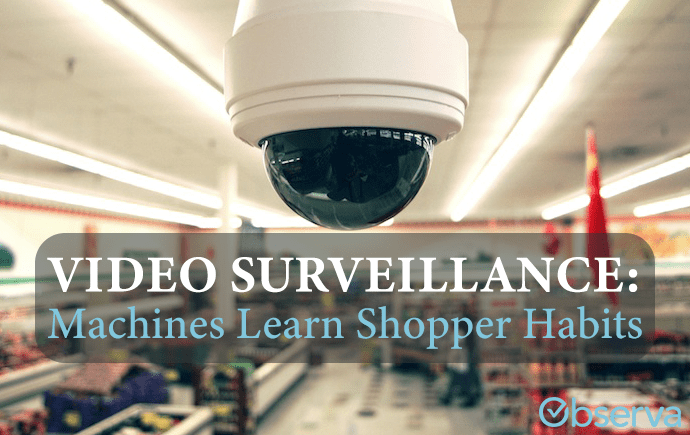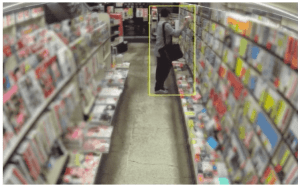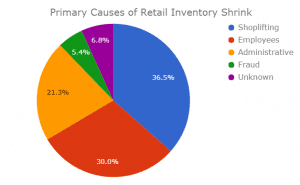Video Surveillance: Machines Learn Shopper Habits
Video cameras are nothing new to retail stores. They catch shoplifters in the act, provide evidence for in-store crimes, and monitor employees closely; but what does the advancement of this video technology mean for surveillance and the shopper?
Machines can now be trained to predict risky human behavior with reasonable accuracy, and this will only improve in the coming years. Will the retail world be able to implement this training in its real-time video footage? Can CPG brands use video to better understand and predict human behavior while shopping in a store or browsing a shelf? There’s still much to learn with this evolving technology, but many retail companies are attempting to get a head start on its application.
Predicting Questionable Behavior
Humans have a sixth sense that can help them detect a dangerous situation in less than 200 milliseconds. Using this knowledge, some cities now have trained operators who watch real-time footage of crowds to detect potential dangers. If humans can detect danger, a machine can probably learn to do so as well.
The Chicago Police Department is applying video surveillance to police data sets by combining historical data (such as previous arrest records) and real-time Internet of Things data such as sensor-influenced cameras or microphones that detect gunshots. Certain areas are then highlighted on a dashboard available to individual police officers, and they are given crime prevention suggestions based on the information.
Although implementing such a novel and serious technology into retail may seem like a distant possibility, companies are already beginning to design the technology for it, so it’s important to understand the implications of such a technology. The slight movements of a shoplifter or employee stealing money are different from gunshots, so it begs this question: At what point is suspicious activity acted on in the store?
Source: The Verge
Shoplifting leads to 35.55 percent of losses and is the largest cause of inventory shrinkage in the United States, which results in around $43 billion in sales lost. Currently, many stores have video cameras, but data from these cameras tend to act as supplemental legal data after catching an offender. By implementing a long-term, reliable program that catches offenders consistently before the theft, retail shrinkage could be massively reduced, saving billions of dollars for brands and retailers.
Source: Erply
Considering the Issues
Current Quality Is Low
The police are using facial recognition to catch previous offenders, so would it be appropriate to use facial recognition in the case of shoplifting, or are these offenses too minor? To do this, machines would need extensive data on someone’s face and high-quality video. Building these systems, at least for now, is incredibly expensive, and the accuracy remains low. The potential for false negatives is real, so the customer’s experiences must be kept in mind. UK police have released examples that show 92 percent false negatives when cameras and computers try to pick out villains at a soccer match. That doesn’t mean police confronted 92 percent of attendees, but it means that more than nine out of ten people predicted to be offenders were not. The system was looking at 170,000 people and only suggested 2,470, or 1.5 percent, were potential offenders.
Personal Data Security
If a store is able to collect information on all customer movements and facial features, does this mean the store owns the information about their customer’s movements and faces? Should this information ethically be kept private, and can it ever be private?
With the potential for this information getting leaked to the public, given to the government, or shared with criminals, privacy is a major concern for many people. With the high potential for personal data being sold, customers typically do not want this information collected and tracked.
Retail stores would need to set up extreme security standards and limits to the information collected to get customers to trust them, and this may still be unappealing for most customers. Think about the data breaches surrounding credit cards and personal information that happen on a weekly, if not a daily, basis. (Here’s a link to the most recent eighteen that have had a major impact.)
Machine Bias
Another concern about this technology is the bias that a machine creates when trained on data that is biased. This public concern is voiced commonly when discussing video surveillance use in law enforcement because it has been proven that face recognition misidentifies African-Americans and ethnic minorities, young people, and women at higher rates than white people, older people, and men, respectively.
Although use of video surveillance could prevent massive amounts of inventory shrinkage in stores by preventing shoplifting and employee theft, the technology has many implications that need to be considered before use. Consumers will likely have many issues with this type of technology being implemented, and retailers will need to consider these issues in the coming years as the technology is adopted in stores.


